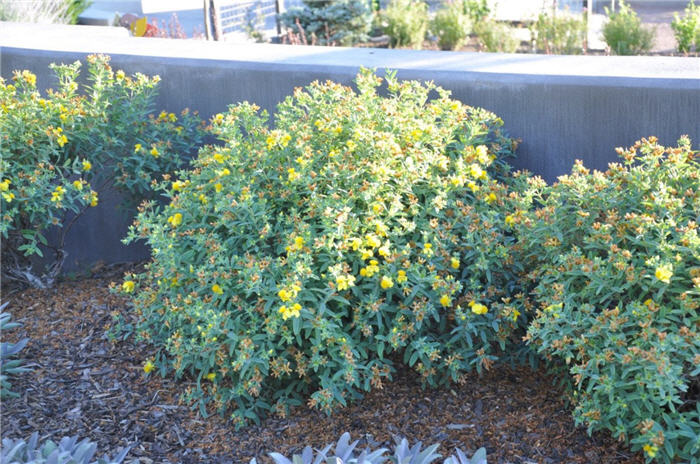| Botanical Name: Hypericum frondosum | |
| Common Name: Shrubby St. Johnswort |

-
Anatomy
-
Culture
-
Design
Plant Type
Shrub
Height Range
1-3', 3-6'
Flower Color
Yellow
Flower Season
Summer
Leaf Color
Blue Green
Bark Color
Red
Fruit Color
Red
Fruit Season
Summer, Fall
Sun
Full, Half
Water
Low
Growth Rate
Moderate, Slow
Soil Type
Sandy, Clay, Loam
Soil Condition
Average, Rich, Well-drained
Soil pH
Neutral, Basic
Adverse Factors
n/a
Design Styles
English Cottage, Formal, Mediterranean, Ranch, Spanish, Woodland
Accenting Features
Showy Flowers
Seasonal Interest
Summer, Fall
Location Uses
Shrub Border, Foundation, Walls / Fences
Special Uses
Hedge, Small Spaces
Attracts Wildlife
n/a
Information by: Stephanie Duer
Photographer:
Photographer:
-
Description
-
Notes
Shrubby St. John's wort is a small, dense, upright, mounded deciduous shrub that is noted for its large showy golden yellow flowers and attractive blue-green foliage. It grows to 3 to 4 feet tall and wide. Bright yellow flowers with bushy yellow stamens bloom June and July. Flowers give way to reddish-brown narrow ovoid fruit capsules that ripen in September and persist well into winter. Attractive exfoliating reddish-brown to purplish bark develops on mature stems. A nice mid-season bloom to add to the shrub or foundation border.
Grow in average, well-drained soils in full sun to part shade. Prefers rich, sandy loams. Tolerant of some drought. Apply mulch around root zone to aid in over-wintering. Plants may suffer tip dieback or die entirely to the ground in harsh winters. When plants die to the ground in winter, the roots often survive and send up new shoots in spring. Flowers bloom on new wood, so winter damage will not adversely affect flowering.